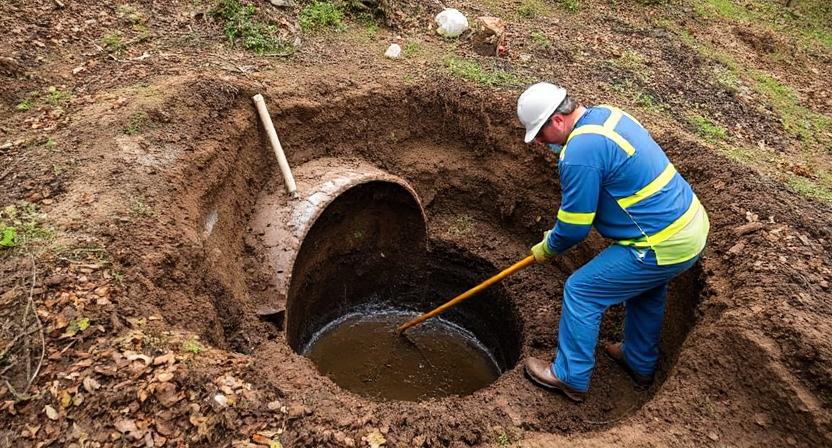
Septic Tank Cleaning: The Ultimate Homeowner’s Guide
When it comes to home maintenance, one task that often gets overlooked is septic tank cleaning. Yet, it plays a vital role in keeping your home hygienic, your plumbing system functional, and your surroundings environmentally safe.
Whether you’re a new homeowner or have lived in your house for years, understanding how septic systems work—and how to clean them—is essential. In this in-depth guide, we’ll cover everything you need to know about septic tank cleaning, including why it matters, how often it should be done, signs you need it, cost breakdowns, and DIY vs professional cleaning tips.
What is a Septic Tank and How Does It Work?
A septic tank is an underground chamber made of concrete, fiberglass, or plastic, through which domestic wastewater flows for basic treatment. Typically found in homes not connected to municipal sewage systems, the septic tank separates solid waste from liquids and allows bacteria to break down organic matter.
Here’s how it works:
- Wastewater enters the tank from household drains.
- Solids settle at the bottom forming sludge.
- Oils and grease float to the top, forming scum.
- Effluent (treated liquid) flows out to the drain field for further filtration in the soil.
Over time, sludge builds up and reduces the tank’s capacity, which is why regular septic tank cleaning is necessary.
Why Septic Tank Cleaning is Important
Failing to clean your septic tank can lead to serious consequences. Here’s why regular cleaning is crucial:
1. Prevents System Failures
When sludge overflows, it can block pipes or damage the drain field, leading to complete system failure—an expensive issue to fix.
2. Protects Health
Overflowing or leaking tanks can contaminate local water sources, exposing your family and neighbors to harmful bacteria and viruses.
3. Improves Efficiency
A clean tank ensures wastewater is processed properly and reduces the risk of clogs or backups in your home.
4. Saves Money
Preventative cleaning is far cheaper than emergency repairs, tank replacements, or soil restoration after a leak.
How Often Should You Clean Your Septic Tank?
The frequency of septic tank cleaning depends on several factors:
- Household size: More people means more waste.
- Tank size: Larger tanks hold more but may still require regular cleaning.
- Water usage: Excessive use leads to faster sludge accumulation.
- Garbage disposal usage: Adds solids to the system more quickly.
General recommendation:
Clean your septic tank every 3 to 5 years. However, some homes may need it as often as every 1 to 2 years.
Pro Tip: Keep records of all inspections and cleanings for future reference.
Signs Your Septic Tank Needs Cleaning
Here are common warning signs that indicate it’s time for a cleaning:
- Slow drains and gurgling sounds in toilets and sinks.
- Bad odors around the tank or inside the home.
- Pooling water or wet spots near the drain field.
- Sewage backup in toilets or sinks.
- Lush, unusually green grass over the septic area.
If you notice any of these, schedule a septic tank cleaning service immediately.
The Septic Tank Cleaning Process
Professional septic tank cleaning usually involves the following steps:
1. Inspection
A licensed technician will inspect the tank to assess its condition and measure sludge levels.
2. Pumping
A vacuum truck is used to pump out the waste, including sludge and scum. This is the core of the cleaning process.
3. Cleaning the Interior
Technicians may spray the interior with water to dislodge any stuck debris and ensure complete cleaning.
4. Visual Check
They will inspect for cracks, leaks, or signs of wear that might require repairs.
5. Disposal
The collected waste is transported to a treatment facility for safe disposal.
DIY vs Professional Septic Tank Cleaning
While you can inspect your system on your own, cleaning should always be left to professionals. Here’s why:
✅ Professionals:
- Have the right tools and vacuum trucks.
- Understand safety protocols for dealing with hazardous waste.
- Can spot issues you might miss.
❌ DIY Cleaning Risks:
- Health hazards from exposure to toxic waste.
- Risk of damaging your system.
- Legal issues with improper waste disposal.
Conclusion: Hire a licensed, experienced septic tank cleaning company for safe and thorough service.
How Much Does Septic Tank Cleaning Cost?
The cost can vary depending on location, tank size, and access, but here’s a general estimate:
- Average cost: $250 to $500
- Large tanks or extra services: $600+
- Emergency cleanings: Can exceed $1,000
Cost-saving tip: Combine cleaning with regular inspections to catch small issues early and reduce long-term expenses.
How to Maintain Your Septic Tank Between Cleanings
Cleaning is only part of the equation. Follow these practices to extend the life of your system:
🚫 Don’t Flush Harmful Items
Avoid flushing wipes, diapers, sanitary products, or harsh chemicals.
💧 Conserve Water
Reduce water use with efficient fixtures to minimize stress on your septic system.
🧼 Use Septic-Safe Products
Choose detergents and cleaners labeled as septic-safe.
🌳 Protect the Drain Field
Don’t park cars, plant trees, or build structures over the drain field.
📆 Schedule Regular Inspections
Get your system checked every 1-3 years even if it seems fine.
Septic Tank Cleaning for Commercial Properties
Commercial buildings with septic systems often need more frequent maintenance due to higher usage. Restaurants, hotels, and facilities with kitchens or restrooms must ensure compliance with local health regulations by scheduling cleanings at least once or twice a year.
Common Septic System Myths
❌ Myth 1: Additives Eliminate the Need for Cleaning
Truth: No product replaces the need for pumping and cleaning.
❌ Myth 2: As long as drains are fine, the tank is fine
Truth: Many issues are hidden until they become emergencies.
❌ Myth 3: Cleaning too often is bad for the system
Truth: Regular cleaning only helps, it doesn’t harm.
Final Thoughts
Regular septic tank cleaning isn’t just good hygiene—it’s smart homeownership. By understanding your system, recognizing the signs of trouble, and investing in proper maintenance, you can avoid nasty surprises and ensure your home remains clean, safe, and efficient.















